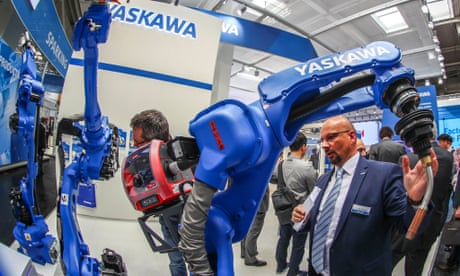Gillian Tett in The FT
Five years ago Reda Cherif and Fuad Hasanov, two economists at the IMF, wrote a paper with the (slightly) sarcastic title: “The Return of the Policy That Shall Not Be Named: Principles of Industrial Policy”.
This pointed out that while strategic policy intervention was widely viewed as a key reason for the east Asian economic miracle, it had a “bad reputation among policymakers and academics” — so much so that, from the 1970s onwards, the phrase was rarely mentioned in polite company, or by the IMF.
No longer. Last month the fund reported that it had observed no less than 2,500 industrial policy actions around the world in the last year alone, of which “more than two-thirds were trade-distorting as they likely discriminated against foreign commercial interests”.
More striking still, industrial policies used to be far “more prevalent in emerging economies” than developed ones; between 2009 and 2022, there were cumulatively 7,000 subsidies tracked in developing countries, and fewer than 6,000 in developed ones. But last year’s surge was “driven by large economies, with China, the EU and the US accounting for almost half of all new [industrial policy] measures”.
That shift can be seen not just in data, but rhetoric too. Last month, Mario Draghi, former head of the European Central Bank, lamented that Europe “lack[s] a strategy for how to shield our traditional industries from an unlevel global playing field caused by asymmetries in regulations, subsidies and trade policies”. He called for the EU to fight back with industrial policy.
In the UK, the opposition Labour party is echoing these themes, calling for a “New Deal” and touting what it calls “securonomics”. In the US, Donald Trump wants huge trade tariffs, while Joe Biden has called for tariffs in sectors such as steel. The president’s Inflation Reduction Act is yet more industrial policy.
But anyone pondering that striking number in the IMF report should remember a crucial point that ought to be obvious but is often overlooked: “industrial policy” can mean many different things. As Cherif and Hasanov told a seminar at Cambridge’s Bennett Institute this week, there is an important difference between policies that try to create growth by shielding domestic companies from foreign competition and those which help those companies compete more effectively on the world stage.
The former “import substitution” strategy was pursued by many developing countries in recent years, including India. It is also the variant favoured by Trump and the one being considered by some European politicians, for instance in the case of Chinese solar panels.
But it is this latter approach that has given industrial policy a bad name. On the basis of copious data, Cherif and Hasanov argue that import substitution models undermine growth in the long term since they create excessively coddled, inefficient industries.
By contrast, the second variant of industrial policy aims instead to make industries more competitive externally in an export-oriented model, while worrying less about imports. This approach is what drove the east Asian miracle, and is what creates sustained growth, the data suggests.
The difference in approach is embodied by the contrasting fortunes of Malaysian automaker Proton car and South Korea’s Hyundai. The former was developed amid import substitution policies, and never soared; the latter flourished on the back of an export-oriented strategy.
A cynic might retort that policy is rarely so clear cut as these contrasting car tales might suggest. It is hard for any company to fly on the world stage if its key competitors are excessively subsidised in closed markets — as evidenced by the woes of EU solar-panel makers trying to compete with their Chinese rivals. It is also tough to tell countries to aim for export-driven growth in a world where trade is fragmenting and protectionism rising.
In any case, while export-oriented strategies work for small or medium-sized countries such as South Korea, they may seem less relevant for a giant such as America.
Then there is a more fundamental question around economic change. As a thoughtful paper published last year by the economists Réka Juhász, Nathan Lane and Dani Rodrik notes, while “industrial policy has traditionally focused on manufacturing”, it is the service sector that now dominates. Thus “governments are likely to look beyond manufacturing as they consider productivity-enhancing ‘industrial’ policies in the future”.
Cherif and Hasanov think institutions such as America’s Darpa give one clue to innovation-boosting measures in this space; Juhász, Lane and Rodrik cite worker training and export credit. But this needs holistic policy, which America, say, lacks.
Either way, the key point is that insofar as western politicians are now increasingly happy to utter the once forbidden words “industrial policy”, they need to define what they mean. Is the goal to exclude competitors from the domestic stage, via tariffs? Or to make domestic producers more competitive and innovative in a global sense and better able to compete? Or is it something else? Investors and markets need clear answers. So, more importantly, do voters.


